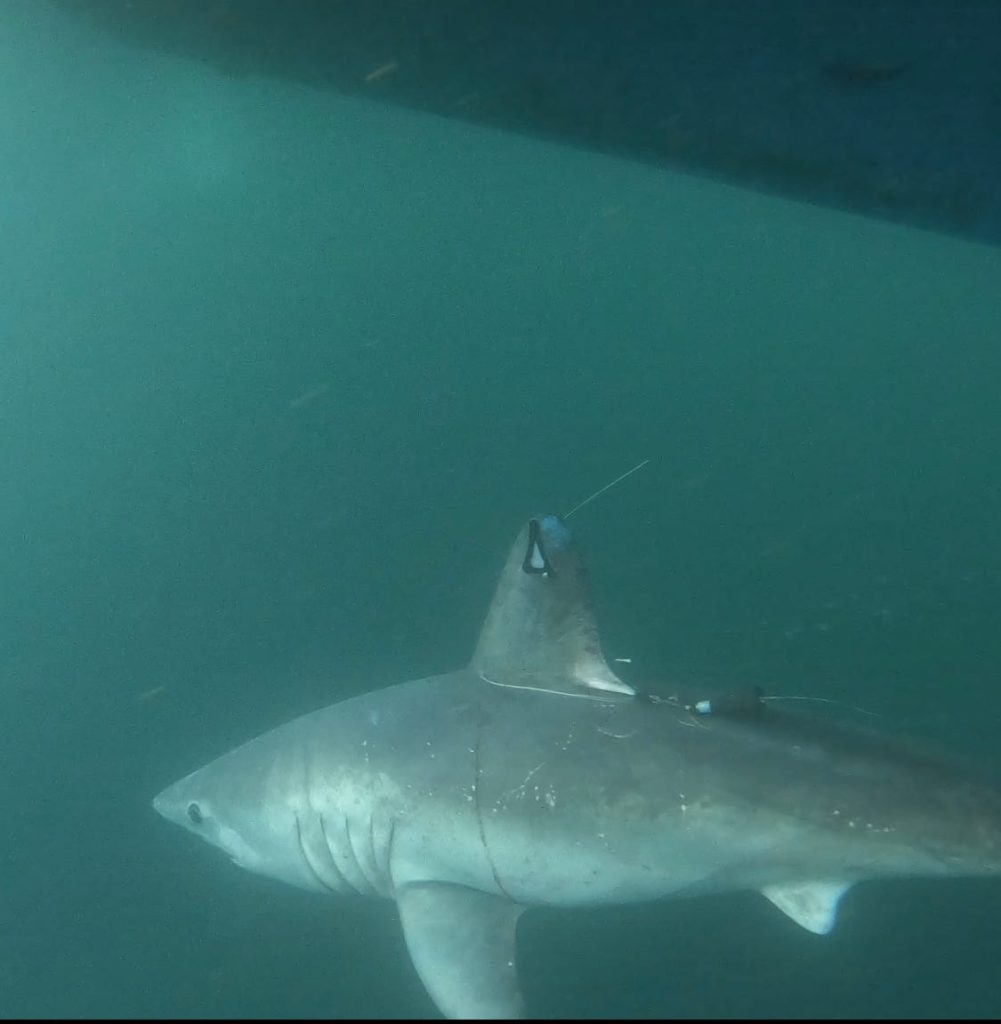For the first time ever, researchers have discovered evidence of a top-of-the-food chain shark being killed by another predator. The study, published in Frontiers in Marine Science, focused on tracking pregnant porbeagle sharks due to their endangered status. The team of scientists from Oregon State University, Arizona State University, and the Atlantic Shark Institute found that a large warm-blooded shark had been preyed upon by another warm-blooded predator, likely another shark. The sharks were equipped with finmount tags and pop-off satellite archival tags to track their movements and monitor their temperature and depth in the ocean.
One of the sharks studied, measuring 8 feet in length, had been tracked for five months before being killed by another predator. The researchers discovered that the shark had been eaten by a warm-blooded predator based on data from the archival tag. A second porbeagle shark was also killed in a similar manner a year after the first incident and sank to the bottom of the ocean before its tag resurfaced. The researchers believe that the predator responsible for these attacks could be a white shark, a mako shark, or another porbeagle.
The shark that was killed had traveled hundreds of miles from New England to Bermuda and was swimming at depths between 1,640 feet and 3,280 feet in the ocean. The sudden increase in temperature recorded by the tag indicated that the shark had been consumed by another creature with a body temperature between 25 and 27 degrees Celsius, such as a lamnid shark. The researchers speculate that the predator was most likely a mako or white shark, as they are larger than porbeagles and fall within the same temperature range.
Another interesting observation made by the team was the sudden sinking of a porbeagle shark to the ocean floor at a depth of about 1,968 feet. The shark had not been consumed by a predator, but its tag resurfaced after sinking, suggesting that something had killed the shark without consuming it. Both sharks were attacked at similar depths and locations a year apart from each other, indicating a potential predator in the area. These findings raise questions about the vulnerability of large sharks to predation and highlight the need for further research and understanding of shark behavior in the ocean.
The researchers emphasize the importance of studying and learning more about the interactions between large sharks and their predators in the ocean. Despite the assumption that smaller sharks are preyed upon by larger ones, the discovery of an 8-foot shark being consumed by another shark challenges previous beliefs about shark behavior. The incidents highlight the complexity of marine ecosystems and the need to expand our knowledge about the top predators in the ocean. Further research will help scientists better understand the dynamics of shark populations and their interactions with other species in the marine environment.


